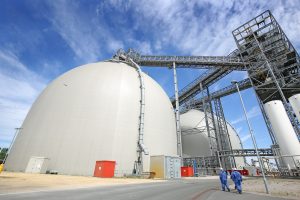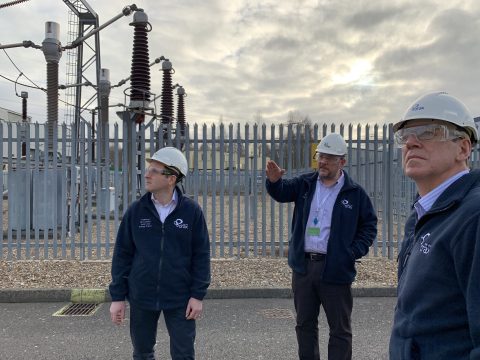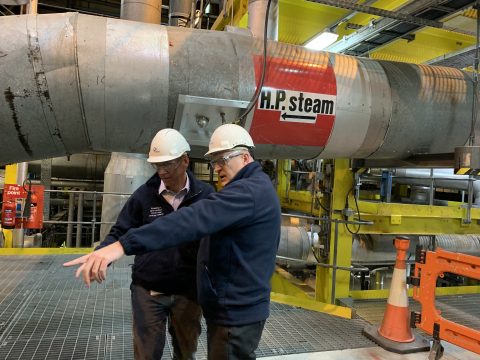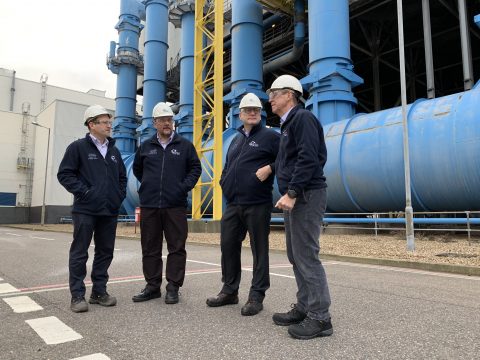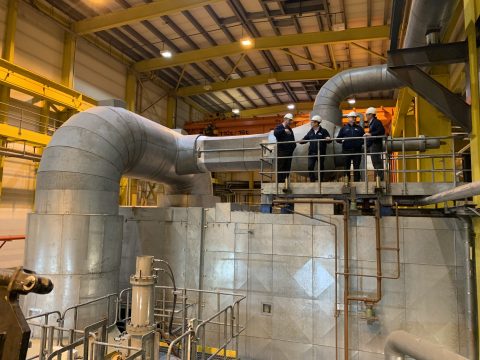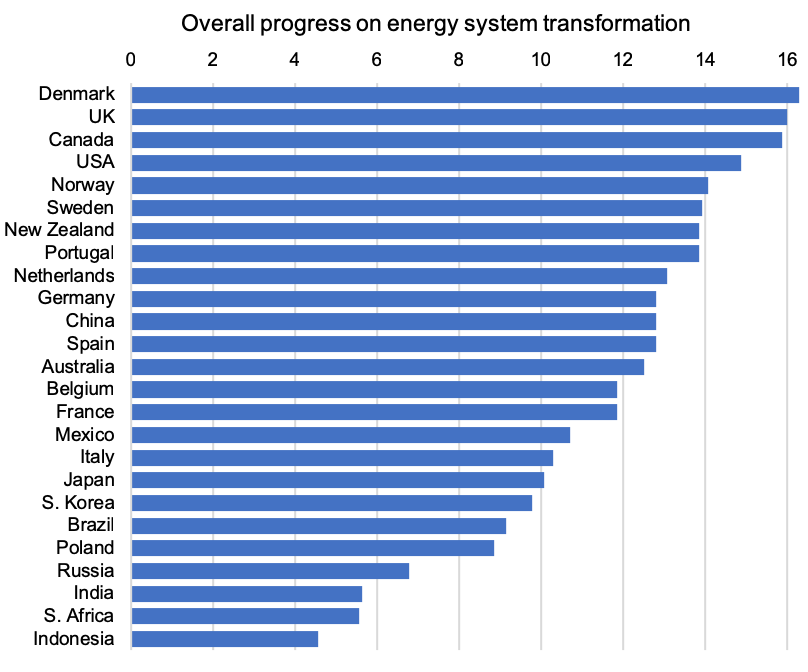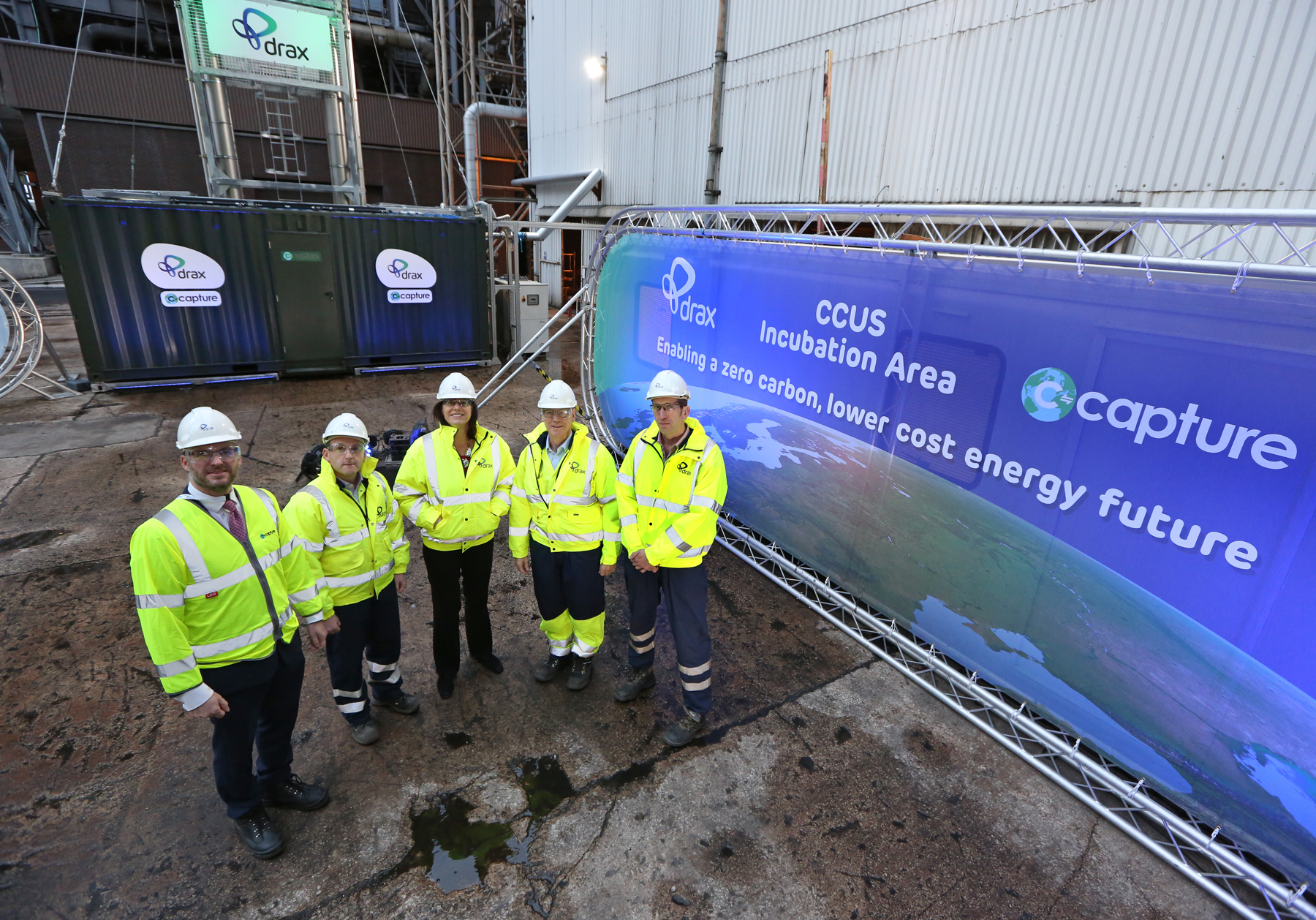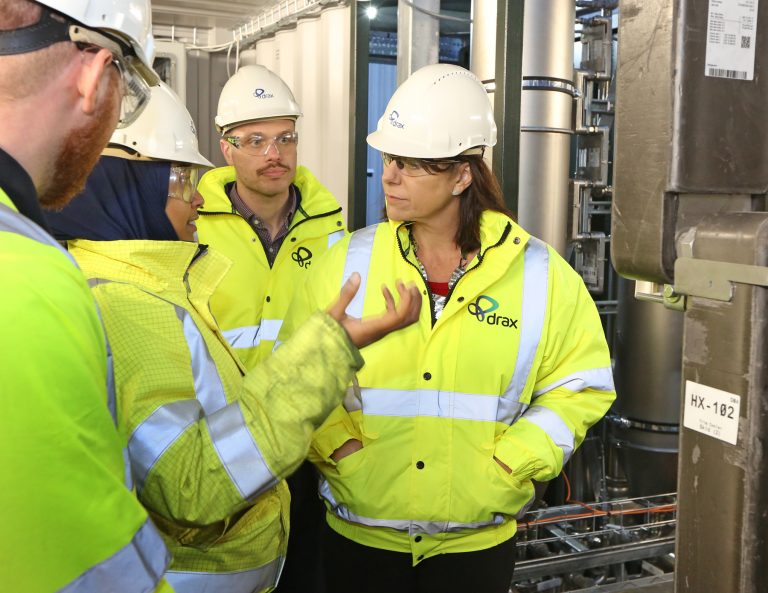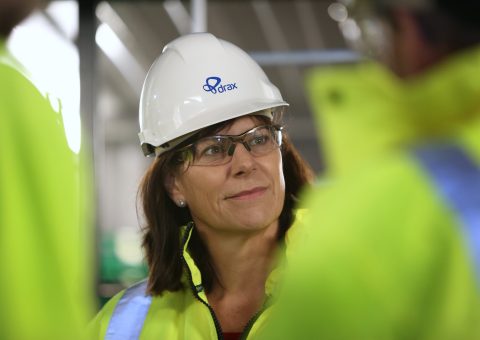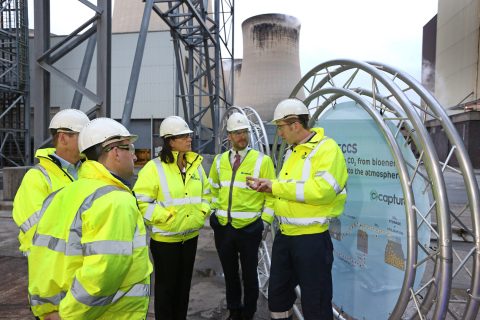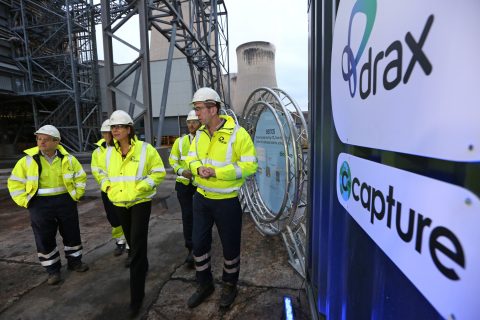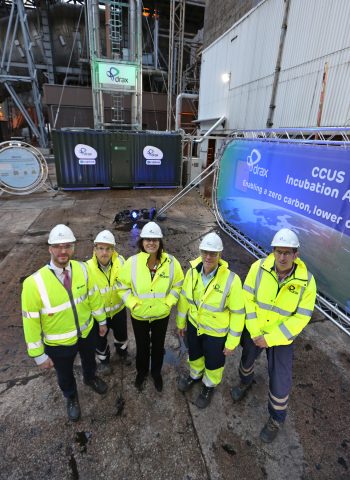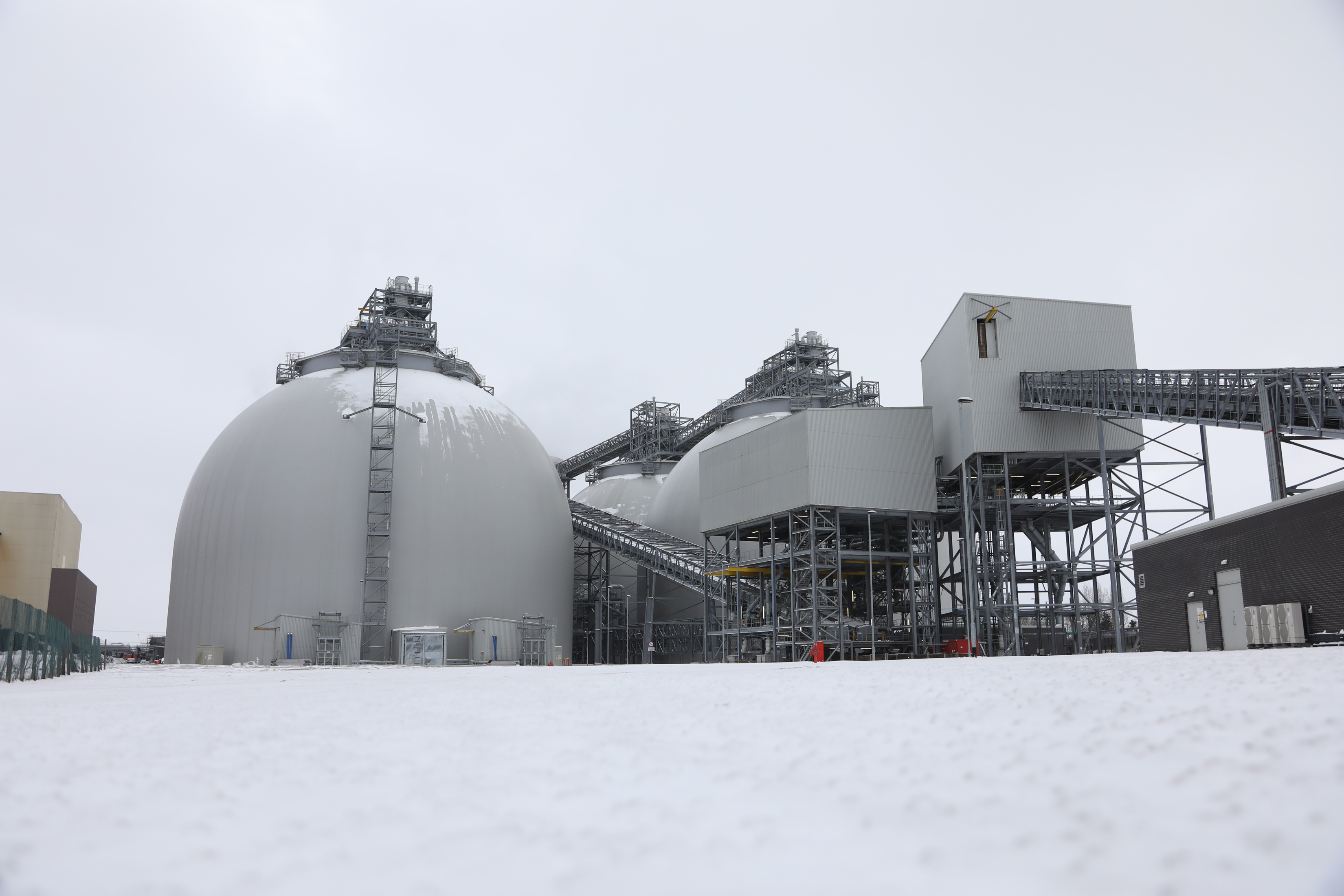
The gas-fired power station is part of a portfolio of hydro, pumped storage and gas power generation assets which have been sold by Spanish company Iberdrola to Drax Group – owners of the UK’s largest power station at Selby in North Yorkshire.
The deal adds a total of 2.6GW of generation capacity to Drax’s portfolio, reinforcing its position at the heart of Great Britain’s energy system.
Drax will now generate enough power for more than 8.3 million homes with operations in the South East of England, Yorkshire, Lancashire, London, the East of England, the East Midlands, Scotland and Wales.
Andy Koss, Drax Power CEO, said:
“As a British energy company we’re really proud to be the new owners of these critical power stations across England and Scotland. We’re looking forward to working with our new colleagues at each of the sites and playing an increasingly important role in the UK’s power system.
“We’ve been to meet the team at Rye House Power Station and have been impressed with the skill and expertise there.
“This power station generates very flexible power which not only keeps the lights on for thousands of households, but also provides crucial system support services to the grid, maintaining secure supplies and enabling more renewables like wind and solar onto the system.”
The 2.6GW portfolio includes four Combined Cycle Gas Turbine (CCGT) stations in England: Rye House in Hertfordshire (715MW), Damhead Creek in Kent (805MW), Shoreham in West Sussex (420MW) and Blackburn Mill in Lancashire (60MW).
With the additional 2GW of gas power stations acquired through the deal Drax will be better placed to provide the flexibility and stability to help underpin more solar and wind power which will be needed in the decades to come if the UK is to meet its climate targets.
The Scottish assets included in the deal are: Cruachan pumped storage hydro (440MW), run-of-river hydro locations at Galloway and Lanark (126MW) and a biomass-from-waste facility (Daldowie) in Scotland.
The combination of hydro plants in Scotland with Drax’s biomass units in Yorkshire reinforce the company’s position as Great Britain’s biggest generator of flexible and renewable energy.
ENDS
Media contacts:
Ali Lewis
Drax Group Interim Head of Media & PR
E: ali.lewis@drax.com
T: 07712670888
Editor’s Notes
- The acquisition of the portfolio of flexible, low carbon and renewable assets was announced on October 16, 2018 and the deal completed on December 31, 2018
- The deal increases Drax’s generating capacity by 60% and senior executives from Drax are visiting all of the new power stations to meet the teams which operate them.
- The portfolio of assets is highly complementary to Drax’s existing generation activities and will accelerate its development from a single-site generation business into a multi-site, multi-technology operator.
- Having converted two thirds of Drax Power Station in Selby, North Yorkshire, to use sustainable biomass instead of coal, Drax has transformed the business to become the biggest renewable electricity generator in the UK and the largest decarbonisation project in Europe.
- Drax Group is now the Great Britain’s fifth largest non-domestic energy supplier and the biggest supplier of renewable power to UK businesses and organisations, with over 350,000 now being provided with 100% renewable power.
Photos
- Andy Koss; Martin Rees-Pedlar, Rye House Engineering Manager; and Will Gardiner, outside Rye House Power Station and next to the National Grid.
- L-R: Will Gardiner, Drax Group CEO, and Lee Warren, Head of Thermal, inside Rye House Power Station.
- L-R: Andy Koss, Drax Power CEO; Martin Rees-Pedlar, Rye House Engineering Manager; Lee Warren, Head of Thermal and Will Gardiner, Drax Group CEO, outside Rye House Power Station.
- L-R: Martin Rees-Pedlar, Rye House Engineering Manager; Andy Koss, Drax Power CEO; Lee Warren, Head of Thermal and Will Gardiner, Drax Group CEO, take a look round Rye House Power Station.
About Drax
Drax Group’s ambition is to enable a zero carbon, lower cost energy future. Its 2,600-strong staff operate across three principal areas of activity – electricity generation, electricity sales to business customers and compressed wood pellet production.
Power generation:
Drax owns and operates a portfolio of flexible, low carbon and renewable electricity generation assets across Britain. The assets include the UK’s largest power station, based at Selby, North Yorkshire, which supplies six percent of the country’s electricity needs.
Having converted two thirds of Drax Power Station to use sustainable biomass instead of coal it has become the UK’s biggest renewable power generator and the largest decarbonisation project in Europe.
Its pumped storage, hydro and energy from waste assets in Scotland include Cruachan Power Station – a flexible pumped storage facility within the hollowed-out mountain Ben Cruachan. It also owns and operates four gas power stations in England.
B2B supply:
Drax owns two B2B energy supply businesses:
- Haven Power, based in Ipswich, supplies electricity and energy services to large Industrial and Commercial sector businesses.
- Opus Energy, based in Oxford, Northampton and Cardiff, provides electricity, energy services and gas to small and medium sized (SME) businesses.
Pellet production:
Drax owns and operates three pellet mills in the US South which manufacture compressed wood pellets (biomass) produced from sustainably managed working forests. These pellet mills supply around 20% of the biomass used by Drax Power Station in North Yorkshire to generate flexible, renewable power for the UK’s homes and businesses.
For more information visit www.drax.com/us




